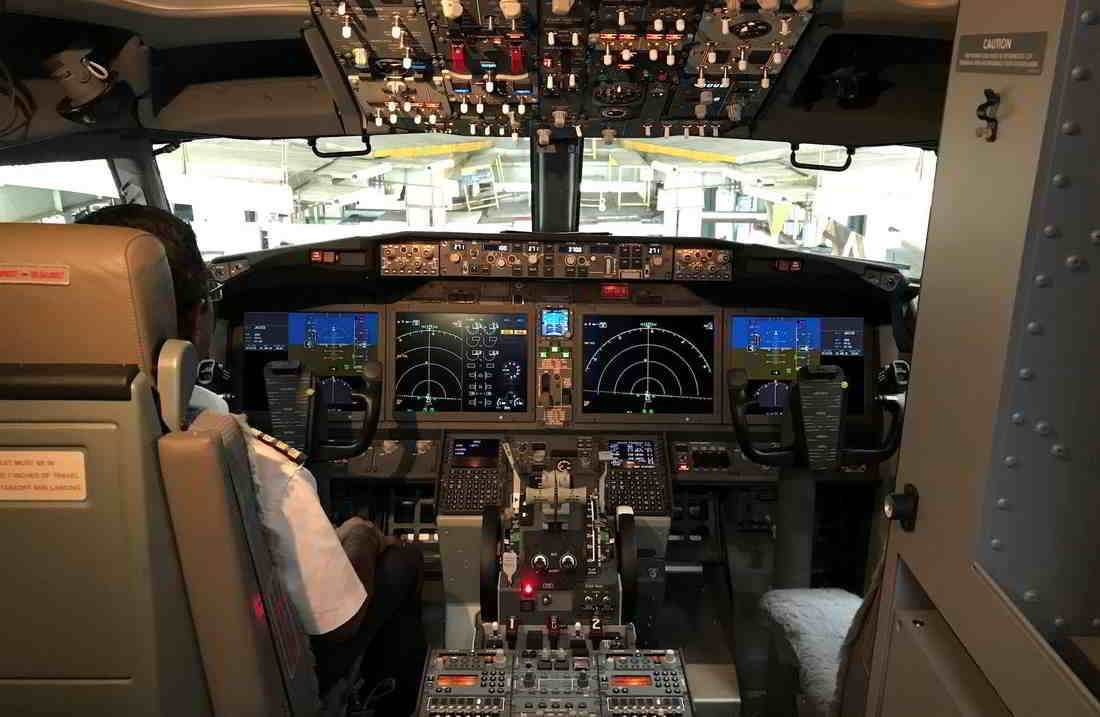As a child I longed to be a pilot and could never have enough of watching low-flying aircraft near my home in Bandra, Mumbai. As I grew up, I realized that I was not going to be a pilot after all, so that passion was revised to plane spotting. But in May 2014, I got very near to flying a plane, and no, I am not talking about Microsoft Flight Simulator or X-Plane!
A company called Flight4Fantasy has set up simulators, both in Bangalore (Forum Mall) and Mumbai (Phoenix Market, Kurla). So for Rs 1,750 (prices may have increased) you get to fly a 737-800 simulator for 30 minutes, with a choice of airports, and a qualified pilot by your side. And you are in the captain’s seat (on the left)! A qualified pilot sits on your right.
Alternatively, you could choose to fly a smaller aircraft, like a propeller powered Cessna.
They allowed me to have one family member in the cockpit, and so my 9-year-old daughter was thrilled to occupy the jump seat as an observer.
There was an orientation session before the flight, and we watched an AV presentation that gave us an overview of all the controls.
A friendly pilot then led us to the simulator and explained all the controls.
For most of the flight, we flew with the the Auto-pilot or Control Panel engaged. Now that makes the task a lot easier. But imagine how difficult it was in the earlier days when there were no computers! In the early decades of flight, pilots had the yoke in their hands throughout the duration of the flight, with a watchful eye continuously monitoring all controls and instruments, not too mention way points and landmarks on the ground for navigation. That also meant remaining attentive throughout the flight. Sounds much like driving a car on a traffic infested highway.
The other thing that fascinated me were the LCD displays and digital systems in the cockpit: The Primary Flight display (PFD), Multi-function Display (MFD), and Engine Indicating and Crew Alerting System (EICAS). These are collectively called the Electronic Flight Instrument System (EFIS). And EFIS has now replaced the erstwhile electro-mechanical instruments and Cathode Ray Tube CRT) monitors on the flight deck.
But what if there is an electrical failure or a fire in the avionics bay (the plane’s data center)? Well, there are backup analog dials to monitor critical systems, and these operate in parallel.
As the pilot instructed me how to fly, and told me which buttons to press or which levers to pull, I realized that flying today is a totally automated affair, thanks to cockpit digitization and EFIS. After take-off, the pilot switches on the auto-pilot and then routinely feeds instructions like heading, altitude, speed etc into the auto-pilot. The plane then turns or pitches its nose on its own, following these instructions. The throttles move on their own, accordingly.
Even landing is an automated affair, thanks to the Instrument Landing System (ILS). There is a Localizer Beam on the airport’s runway. And the antenna in the aircraft’s nose needs to lock on to this beam. For this the pilot needs to enter the unique frequency of the airport’s localizer beam into the Flight Management System (FMS). The FMS is the aircraft’s primary computer.
THE FLIGHT
I chose the Dubai International Airport and flew low around the city to get breathtaking views of the Palm Islands, the Burj Khalifa and other interesting structures in and around Dubai.
We were so immersed in the flying experience that we forgot this was just a simulator. The absence of the six-axis motion and engine hum were the only signs that reminded us about the simulator.
Nevertheless, I did enjoy the experience and got to fulfill my childhood dream!
The DGCA, which is the aviation authority in India, has disallowed anyone other than pilots and cabin crew from entering a cockpit. In fact pilots can get penalized (grounded or de-rostered) should they allow passengers in the cockpit.
So if you are not a pilot, Flight4Fantasy and its simulators are the closest you can get to the real thing. If you are passionate about airplanes, then you’ll find this a worthy investment — even though it’s just a 30-minute flight.
At the end of your flight, you can have a photo opportunity in the cockpit (or cut your birthday cake in there).
You also receive a certificate and a gift!









